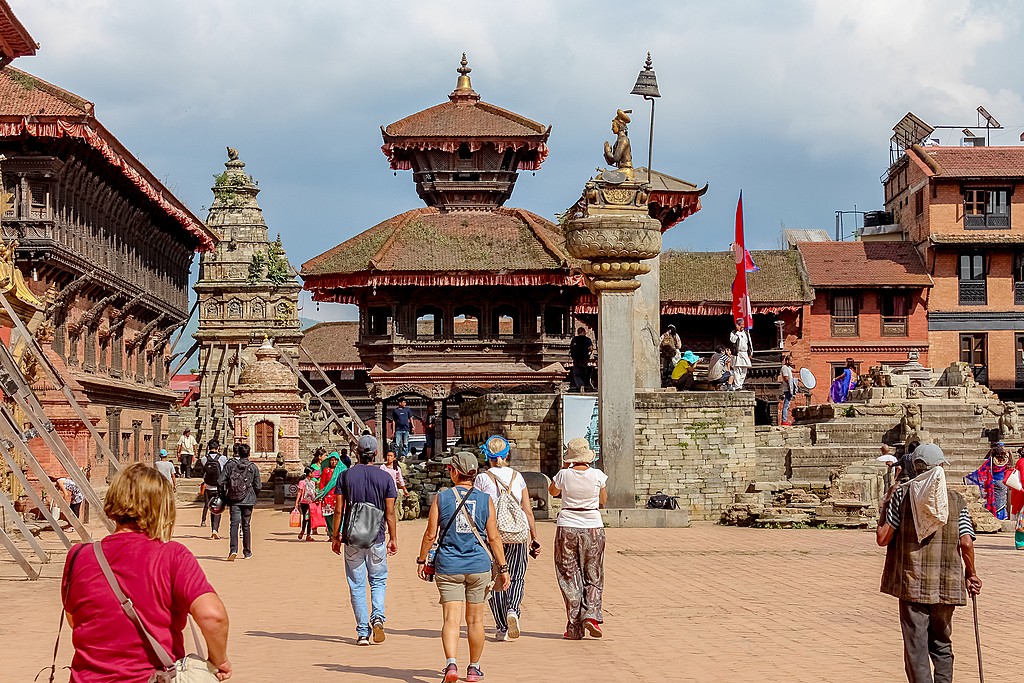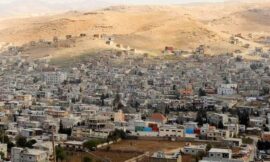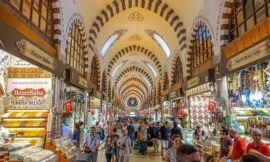Kathmandu, the bustling capital city of Nepal, stands as a vibrant tapestry of history, culture, and modernity. Nestled in the Kathmandu Valley and surrounded by the mighty Himalayas, this city is a captivating blend of ancient traditions and the pulse of contemporary life. As the political, cultural, and economic hub of Nepal, Kathmandu offers a rich mosaic of experiences for both locals and visitors alike.
The city’s historical roots run deep, evident in its UNESCO World Heritage Sites that narrate tales of ancient civilizations. Durbar Square, a historical and cultural epicenter, showcases intricate palaces, courtyards, and temples that date back centuries. The ancient architecture, with its intricately carved wooden windows and doors, pays homage to the Newar craftsmanship that has thrived in the valley for generations.
Swayambhunath, often referred to as the “Monkey Temple,” stands atop a hill, providing panoramic views of Kathmandu and its surroundings. This iconic stupa is adorned with the watchful eyes of the Buddha, symbolizing wisdom and compassion. Pilgrims and visitors alike circumambulate the stupa, turning prayer wheels and soaking in the spiritual ambiance.
Boudhanath, another UNESCO World Heritage Site, is one of the largest stupas in Nepal and a significant pilgrimage site for Buddhists. The colossal mandala, adorned with colorful prayer flags and the gaze of the Buddha, creates a serene and contemplative atmosphere. The surrounding area is home to monasteries, shops, and cafes, making it a cultural and social hub.
Kathmandu is not just a repository of historical treasures; it’s a thriving metropolis where ancient traditions seamlessly blend with modernity. Thamel, a vibrant and eclectic neighborhood, is a testament to this fusion. Narrow alleys are lined with shops selling traditional handicrafts, trekking gear, and souvenirs. The streets come alive with the rhythmic beats of live music, the aromas of diverse cuisines, and the vibrant energy of locals and tourists.
The city’s religious diversity is evident in the multitude of temples, churches, and mosques that coexist harmoniously. Pashupatinath, a revered Hindu temple, draws devotees and tourists alike to its sacred grounds along the banks of the Bagmati River. The complex is a hub of religious activities, including cremation ceremonies that follow Hindu traditions. Nearby, the Guhyeshwari Temple and the Aryaghat, where the funeral pyres burn, contribute to the spiritual landscape.
Amidst the chaos and energy of the city, the Garden of Dreams provides an oasis of tranquility. Originally designed by Kaiser Sumsher Rana, this neoclassical garden is a testament to the architectural elegance of the early 20th century. Visitors can stroll through the well-manicured lawns, fountains, and pavilions, escaping momentarily from the urban bustle.
Kathmandu’s vibrant street life is a celebration of diversity. As evening descends, street vendors offer a plethora of delights ranging from traditional momos to international cuisines. Thamel’s nightlife comes alive with live music, cultural performances, and the camaraderie of travelers sharing stories of their adventures in the Himalayas.
The people of Kathmandu, known for their warmth and friendliness, contribute to the city’s welcoming atmosphere. The markets, teahouses, and narrow lanes provide glimpses into the daily lives of the locals, fostering a sense of connection and authenticity.
In recent years, Kathmandu has embraced modernity without losing its cultural essence. Contemporary art galleries, trendy cafes, and innovative startups coexist with ancient temples and traditional bazaars. The city is evolving as a dynamic center for art, culture, and entrepreneurship.
As the gateway to the Himalayas, Kathmandu serves as a launching point for treks and expeditions into the surrounding mountainous landscapes. The city’s international airport connects travelers from around the world to the awe-inspiring beauty of the Everest region, the Annapurna range, and other Himalayan destinations.
In essence, Kathmandu is a city that resonates with contrasts — ancient and modern, spiritual and secular, chaotic and serene. Its allure lies not only in its historical landmarks but also in the lived experiences of its people and the dynamic energy that permeates its streets. Kathmandu, with its diverse tapestry, stands as a gateway to Nepal’s rich cultural heritage and the majestic landscapes that define the Himalayan nation.



